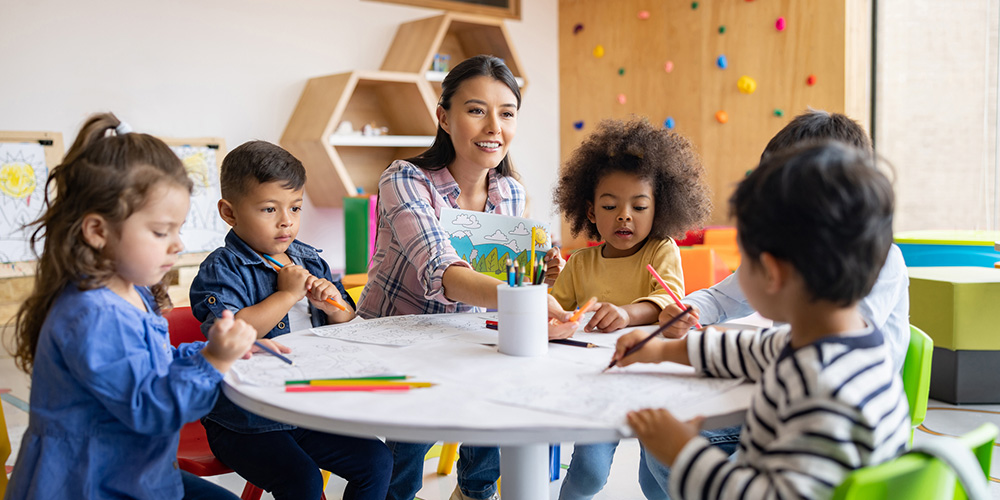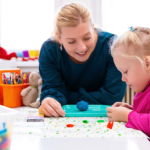Yes, it’s true. Social emotional learning, which has been a statistically supported classroom staple for decades, is on the legislative chopping block in as many as 25 states. And absent educators’ resounding defense of the discipline, it could disappear from schools across the country.
But before we jump into the middle of the hot-button issue, let’s get candid, shall we?
- Kindness can be taught. And it should be taught.
- Human decency can become a conscious, purposeful set of ideals and actions.
- Understanding that our behavior impacts real people with thoughts and feelings ought to remain at the center of every decision we make.
Really, that’s it, the stark and unblinking center of it all. Until recently, it was understood that those three fundamental sentiments were the foundation of teaching SEL in the classroom. But, despite the healing benefits of SEL in an ailing world, educators find themselves in a defensive position. Which begs the question: What’s so scandalous about social–emotional learning, anyway? And how can we ratify the discipline as an indispensable part of our curriculum?
Social–Emotional Learning: A Trojan Horse?
There’s no question that the early 2020s have seen a dramatic increase in the scrutiny of public education. Wars over COVID-19 protocols, remote learning practices, how to care for transgender students (and discuss LGBTQ+ issues generally), and how to approach historical and present-day events regarding race and inequality are just a sampling of the topics that have made headlines over the last few years.
So how did SEL get added to this list of controversies?
Some lawmakers who seek to eradicate social emotional learning cite wanting a greater focus on improving standardized test scores. Others position SEL next to CRT (critical race theory), which comes with its own heavy burden of misinformation and scare tactics.
Let’s take Oklahoma State Senator Shane Jett for example. He recently introduced legislation to outright ban social emotional learning in his state’s public school system — a bill that has been met with considerable backlash from teachers, parents, and charitable organizations. According to the senator:
“SEL’s actual objective is to condition children to prescribed behaviors and ‘anti-racist’ training and social justice posturing, all under the guise of affirming feelings. SEL seeks to find ‘traumas’ in our children as a pretext to push anti-family, anti-logic, and anti-reason philosophies and leftist political ideologies.”
Here, Jett’s statement indicates a gross misunderstanding of the mission of SEL, and instead expresses concerns that the discipline is being used as a vehicle for politically driven ideologies. For most every educator in the country, the statement bears little resemblance to the soft skills of compassion, communication, and self-control they’re trying to teach through SEL curriculum. Yet because of the confusion and fear surrounding the issue, educators find themselves in the position of having to explain — and defend — a part of their job that used to be a given.
How We Can Defend Social–Emotional Learning
Ambiguity and confusion, or at least the perception of these things, serve as a driving force behind disestablishing SEL as an educational cornerstone. If you’re reading this, you likely know all about social emotional learning and its importance in creating a sustainable future with less hardship. To that extent, we’d bet you oppose any and all attempts to remove the discipline from the nation’s collective lesson plan. Here’s the best way to protect the teaching of kindness.
Clearing the Fog
The first line of defense hinges on expressing the truth about what SEL is and how it seeks to help children grow and learn in an environment where human goodness reigns supreme. While the definition of SEL comes with some nuances and intricacies, at its core, SEL espouses the virtue of compassion as the quintessential motivator for every action we take.
Understanding and Expressing the Five Domains of SEL
Sometimes people need a concrete, black-and-white, definitive answer. If lofty concepts regarding how we treat our fellow citizens fall flat, the five social emotional learning domains might help paint a vivid picture of teaching these skills.
- Self-awareness, meaning understanding what causes our emotions, how to express them in a healthy way, and knowing how the resulting behavior might impact other people
- Self-management, meaning understanding that feeling a certain way is OK, but in order to manage our behavior, we must take responsibility for it (in other words, self-control and personal accountability)
- Social awareness, meaning understanding how other people endure unique situations and handling all interactions with empathy
- Relationship skills, meaning understanding how to communicate feelings and needs, as well as listening to others
- Making responsible decisions, meaning understanding the potential consequences of each choice we make, and how those thoughts and actions affect others
Espousing the Importance of Equity and Positive Culture
No two children bear the same academic needs and abilities. No two students require the exact same kind of instruction. Some need more time for completing tests. Others soar in one subject and slog through another. With SEL as an academic flagship, you ensure that all kids understand these differences in learning and socioeconomic status. With that level of emotional maturity, imagine how much better our world will be when these kids enter the workforce.
Why We Must Defend Social–Emotional Learning
Yes, social–emotional learning means a more fluid, impactful classroom ecosystem. Yes, SEL leads to higher test scores, information retention, and general academic performance. Yes, it helps students who feel as if they don’t belong due to learning differences, poverty, cultural contrast, or self-esteem issues begin to realize that they are a valuable part of a school’s community. Yes, young people discover how to treat others with respect, and in turn feel accomplished in the knowledge that they’ve made life easier for someone else.
The list of benefits stretches on and on. And chances are, you can rattle off dozens of other reasons why educators must continue instilling social–emotional learning in our classrooms. But really, it’s less about what happens in school and more about what happens in the next decades.
We’re supposed to carve out a future filled with possibility and respect, and that kind of society starts in the classroom.






